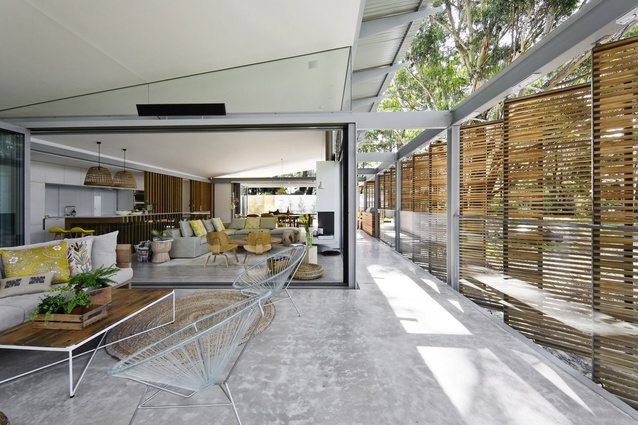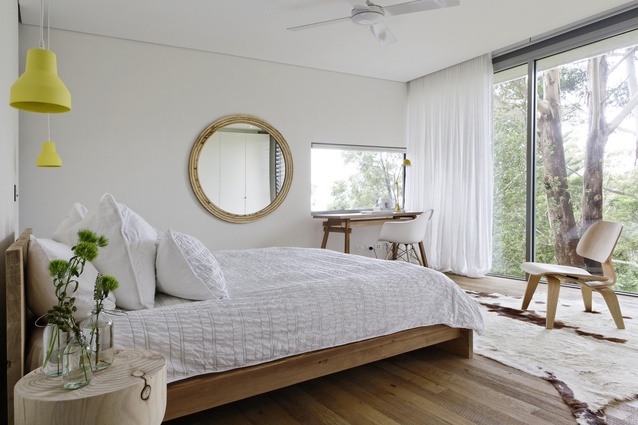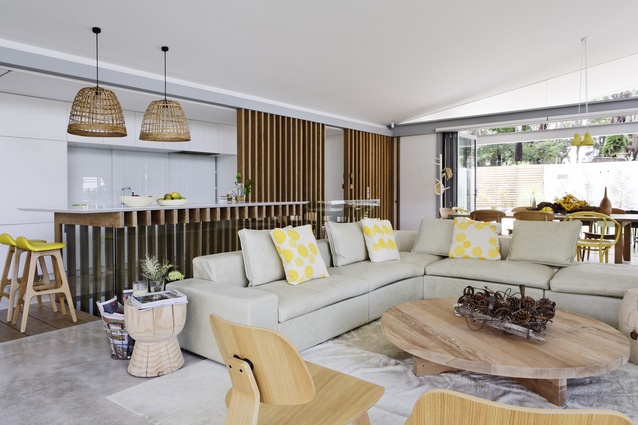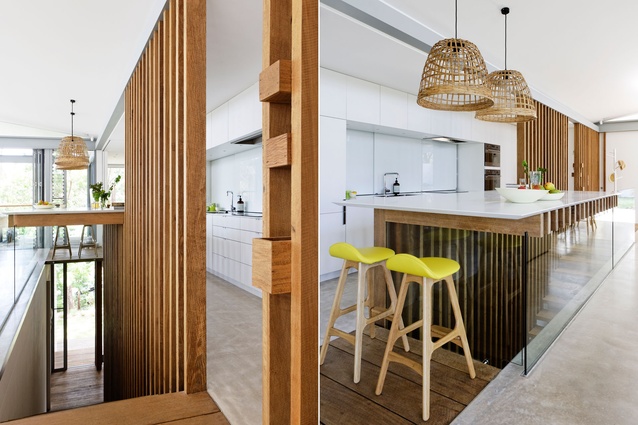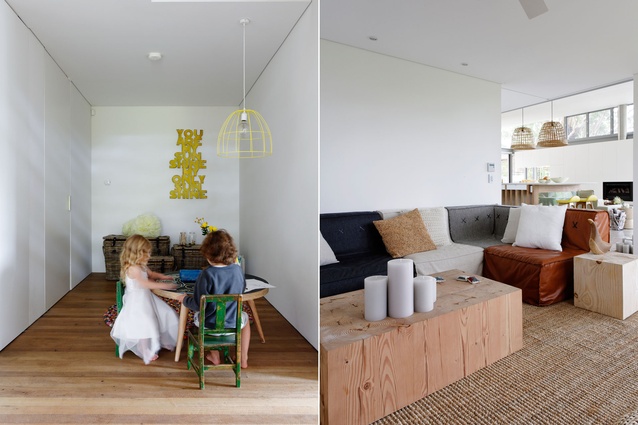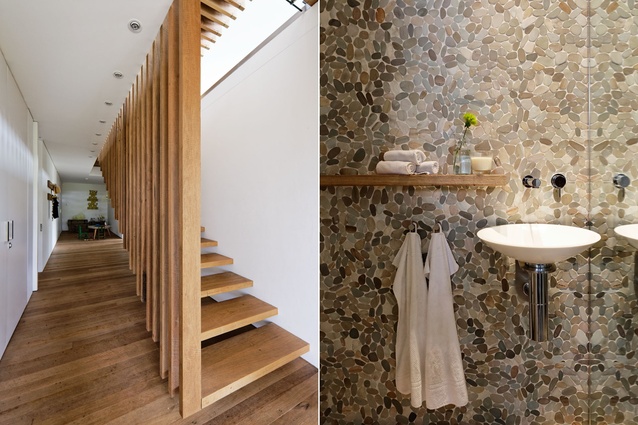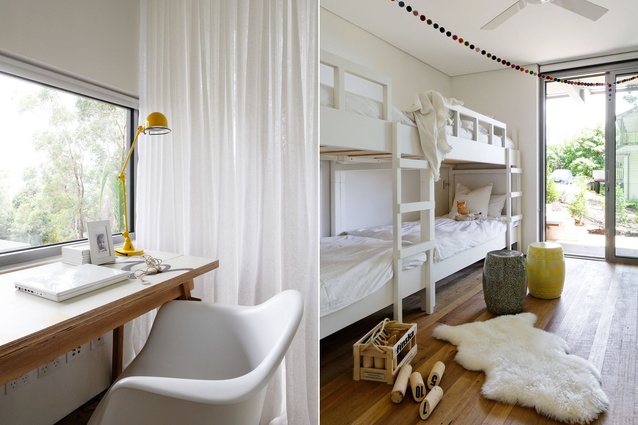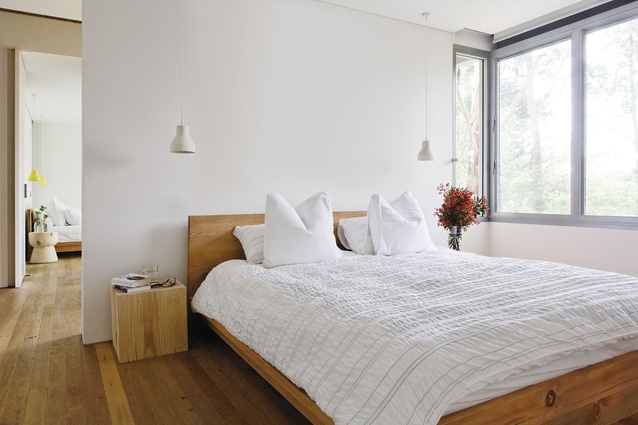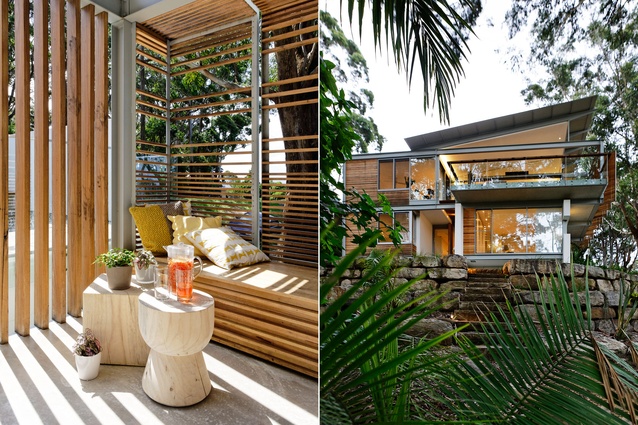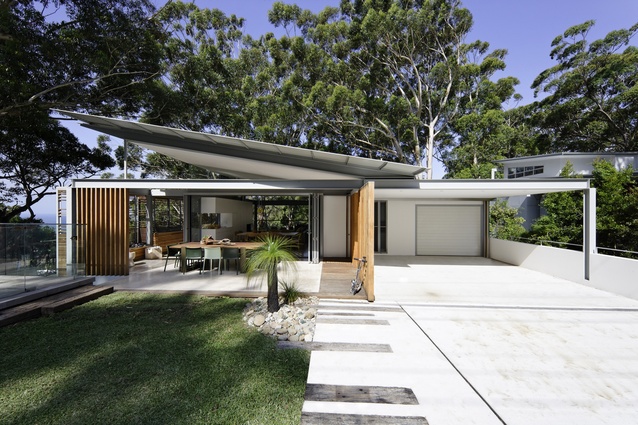Great escape
Perched above the Terrigal Headlands and a mere five-minute walk from Avoca Beach on the New South Wales central coast, is a house that provides the perfect antidote to hectic, metropolitan living.
The two-storeyed residence, dug into the sloping topography, seems to disappear into the bush. An organic palette of tactile materials, which takes its cues from its natural context, enhances the remote, rural feel. Inside, the spaces are designed to be calm and relaxing – and, thanks to plenty of beds and large living areas, are equipped to accommodate lots of weekend guests.
“My clients – a young family of six – wanted a casual holiday home with a strong relationship to the outdoors,” says Steven Isaacs, co-founder of Architecture Saville Isaacs. “Given the site’s elevated position, we designed the house to maximise its coastal view and proximity to the surrounding bushland.”
Isaacs, who is known for his contextual approach to place-making (his own home was built around an existing 30-metre-high eucalyptus tree), has created a carefully balanced and modulated architectural language of pivoting timber louvres, sawn silvertop ash screens and sensitively located apertures, which control privacy, sunlight and selective views to the coast. The varied and carefully conceived elements are supported by an elegantly slender steel framework and a grid of masonry walls, which facilitate an unfettered, open-plan layout on the ground level.
“The clients host extended parties at various times of the year so we designed the ground floor to support an open, flexible and collective approach to cooking, dining and entertaining,” adds Isaacs. “The owners love to cook for their family and friends and wanted a kitchen space that would feel completely connected – both spatially and visually – to the adjacent living and dining areas.”
In fact, the sense of openness is apparent as soon as you approach the house from the street, where the full extent of the ground level as well as a framed view of the forest is brought sharply into focus. Inside, the storey is book-ended by two large verandahs. The western verandah is a semi-enclosed dining area, whilst the eastern verandah forms an intimate outdoor seating area, perfectly framed by forestation. The elegant, floating roof flips up to the north.
Inside, Isaacs’ textured palette of external materials has been continued in the form of a passageway, which extends from the entrance area into the main living space and down the open stairs to the lower level. Defined by a wire-brushed, recycled Tallowwood floor and a double-volume timber screen wall, the zone ends on the upper level at a vertically slatted kitchen island unit which is elegantly suspended
over the stairwell, straddling the galley kitchen and the living area.
“The kitchen is the pivot point of the space,” says Isaacs, who created the house with his business partner Lisa Saville. “It’s both the heart of the home and a useful area from which the owners and their friends can survey the activities of their young children on the ground floor.”
In contrast to the language of open and screened elements, the walls of the rumpus room on the same level are solid screens, making it the only upstairs room which can be completely closed off. “The rumpus room is a useful getaway for the parents, as well as a space to which the children can retreat when their parents are entertaining,” explains Isaacs.
The articulated central passageway, which continues from the ground level down into the sleeping quarters below, becomes an additional play zone, complete with Mark Tuckey play tables and stools on castors.
Given that the house was designed to sleep up to 14 people, the lower floor plan includes two double bedrooms, a master bedroom and two bunk bedrooms, which open onto a north-facing outdoor play court. A random placement of timber sleepers demarcates a path down to a grassed area which folds away into the bush before becoming a path to the beach.
While the scale of the home is robust enough for hoards of children, it still possesses an element of luxury for the visiting adults. The master en suite, for example, somewhat of a self-contained retreat, boasts a stand-alone tub, and a beautifully crafted floating vanity unit, and opens up to a screened outdoor shower. The master bedroom, which the owners envisaged as their mini-retreat, includes a casual ‘study’ (actually just a desk and chair), which enjoys an unobstructed view out to the headland.
Holistically, Isaac’s plan is rational, simple and perfect in its conception.
“Ultimately, we sought to create a peaceful and healthy environment for our clients,” he says. “We took care in constructing a house that could withstand lots of wear and tear and that wasn’t too precious or over-detailed: a house where everyday living is a joy and even simple functions give one pause to reflect.”

